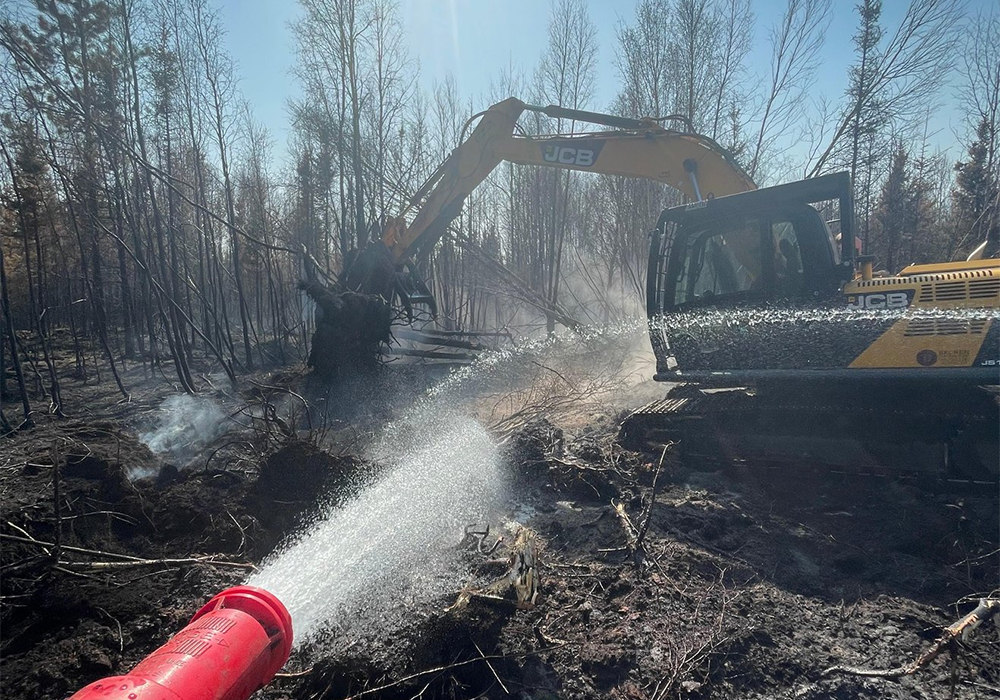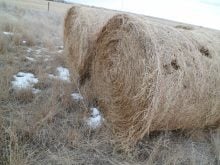Farmers and ranchers are butting heads with emergency management officials as both parties try to tackle Alberta’s wildfires.
Emergency officials say public safety is at risk when farmers and ranchers remain behind to tackle blazes on their and their neighbours’ properties. For their part, those in the agricultural sector say they are being made to feel like a liability rather than an asset when it comes to fighting fires during a time when resources are stretched thin.
County of Grande Prairie fire chief Trevor Grant outlined an encounter between a privately operated bulldozer and first responders, saying his crews came close to being injured while both parties worked independently to fight a new fire.
Read Also

Why feds imposed EV tariffs
Moe and Kinew have a fight on their hands when it comes to eliminating the EV tariff. Canada has to worry about pissing off the U.S. and Mexico and hundreds of thousands of auto workers.
“(The bulldozer operator) came through the tree line opposite where the firefighters were working unbeknownst to the firefighters and almost hit the firefighters with the piece of equipment and trees that were falling,” said Grant.
For Shon Schmaltz, who farms 5,000 acres of grain and has more than 500 cattle at his Worsley area operation, firefighters are getting in the way at times.
He said he sympathizes with emergency officials who were stretched thin because of worker shortages during the first four days of the fires, which started on May 5, but sometimes firefighters impeded farmers and ranchers who were using their equipment to fight the fire.
At a fire in Cleardale, he said he and local Hutterites, with support from oilfield water tankers and Mennonite colony members with heavy equipment and truck licences, were able to protect a ranch owned by Carol Wookey.
“It was just us for 11 1/2 hours. We fought that fire before any fire department showed up at all,” he said, describing 150-metre flames and grass fires all around the property. “We almost lost the property at two o’clock in the morning. The wind changed and the sparks came back over top of us and landed in the bale stack behind us and pretty much blocked us all in there.”
Schmaltz said he has bounced around the Peace Country fighting fires, from Fairview to Hines Creek, where the local farming and ranching communities made up most or all of the fire response.
He said attempts by RCMP to block access for community members fighting the fires were half-hearted. Instead, officers focused efforts on ensuring those not there for that purpose remained outside evacuation zones.
But when it came to some firefighter crews, Schmaltz said in those first days they were getting in the way.
“We were fighting fires and they pull their fire trucks in there because they have to be on scene. They show up empty, with empty trucks to an on-scene fire, and these are farmyards. We have sprayer trailers, tri-axle trucks, tandem trucks,” he said. “And then these fire trucks show up and block off the entrance with empty trucks and then get out and start bossing people around.”
It’s been a difficult few years for the agricultural industry, said Schmaltz, and this fire has hit the region while he’s been trying to seed a crop and others are dealing with cattle herds in the middle of calving.
“And then you get into a situation like this and you’re like, we have a fire here, these are the tools we have, this is the people we have and let’s get after it,” he said, adding fire crews need to focus on knocking down fires and not trying to get in the way of those with the same goal.
The issue of the agricultural sector not being included in wildfire management is not new.
Following years of wildfires in the British Columbia Interior and due to advocacy by the B.C. Cattlemen’s Association, that province introduced a formal protocol acknowledging the role the agricultural sector plays in tackling fires in forestry protection areas.
That protocol states if a rancher is properly prepared, they can tackle a fire on the condition they notify B.C. Wildfire and, once firefighters arrive at the scene, they will take command with the option to incorporate local resources into the response.
After Alberta emergency officials were asked several times about the province’s approach to integration of farmers and ranchers into fire responses, it’s clear the government has no such protocol — formally or informally.
Questioned about the situation and the agricultural sector’s ability to mobilize personnel, heavy equipment and water-hauling resources, Alberta Agriculture Minister Nate Horner said people need to adhere to evacuation orders.
“We have been clear with farmers in the affected areas — farmers, ranchers, livestock to care for — if concerned, they need to go to their municipality, they need to go to the reception centre or they need to go register online to ensure they can have that conversation with the people on the ground,” he said. “They need to identify the specific risk for that area and they need to clearly understand the risk that they are taking on.”
Horner said officials are doing a great job using the resources but farmers and ranchers need to comprehend how dangerous the fires are.
“People need to understand there may be instances that rescue won’t be possible,” he said.
Horner, a Hanna-area rancher, said he has fought fires in his region but said there needs to be an understanding of where everybody is to prevent encounters like those described.
During UCP election campaign media availabilities, Premier Danielle Smith has praised firefighters and commented about the military resources being brought to bear to tackle the fires.
Smith called the amount and scope of the fires unprecedented, noting firefighting resources were stretched thin in tackling the blazes, which have scorched more ground so far this year than in any of the previous five.
While adequate firefighting resources for the region may not have been easily at hand this year, warning signs of extremely dry conditions in the Peace Country and parts of west-central Alberta have been building for months.
Winter precipitation accumulations in the region have been recorded at low levels only seen once every 12 to 25 years. Soil moisture levels are also low in fire-affected areas, according to the provincial agricultural update released April 27.
Those conditions have only deteriorated since then, according to the latest update released on May 10.
















